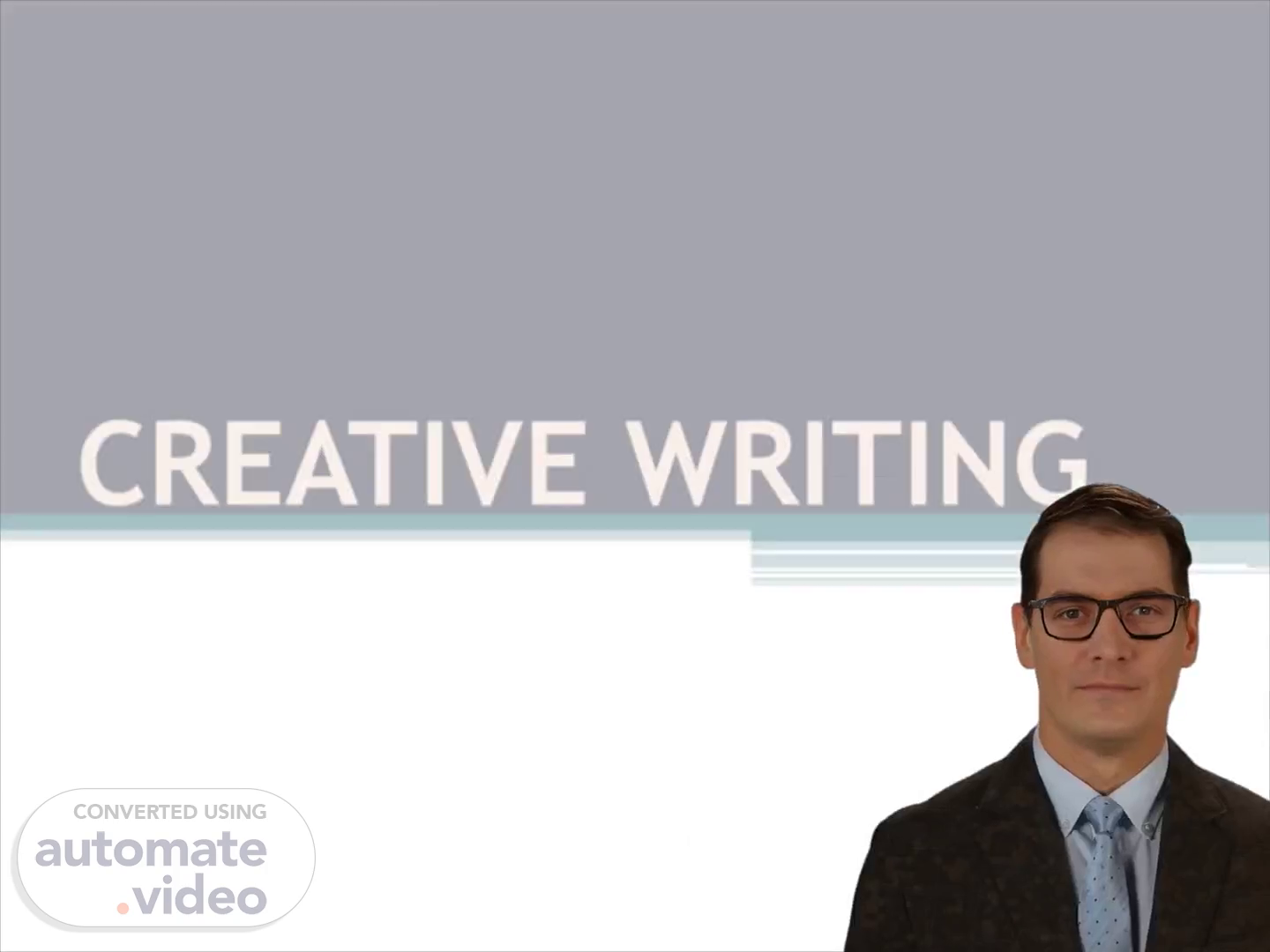
28717e56fb086cf17b3afda2442c0e4f
Scene 1 (0s)
[Virtual Presenter] Good morning everyone. Today, we will be exploring the power of sensory details in creating a desired effect in writing. We will be examining how adding rich imagery to our words can bring them to life and enable deeper understanding of our composition. Let's get started and look at our very first slide, titled 'Image.jpg'..
Scene 9 (1m 1s)
[Virtual Presenter] Slide presents contrasts between technical writing and creative writing. Technical writing is factual and straightforward, using specific words and an academic tone; its goals are informing, instructing, and persuading, and its structure is systematic. Creative writing, by contrast, is imaginative, utilizing general vocabulary and an informal, artistic style; its objectives are to amuse, challenge, and fascinate, and its structure is artistic..
Scene 10 (1m 35s)
[Audio] The image emotively portrays a family with a close bond, comfortable in each other's company. Inferring from this, we can assume the family is supportive, listens to one another, and respects each other. The image emphasizes the value of appreciating the time spent with loved ones. Furthermore, the family's joy can be found in simple pleasures. This image speaks volumes, reminding us of the importance of cherishing our precious moments with those we love..
Scene 13 (2m 17s)
[Audio] Writing can be divided into two broad categories: imaginative and academic. Imaginative writing includes writing for websites, journals, and press releases from brands. Every type of writing project should be approached with an understanding of the style and purpose of the writing..
Scene 14 (2m 37s)
[Audio] This image is a testament to the power of art. Its vibrant colors and expressive paintwork can stir deep emotion within us. Art can lift us up, broaden our view and open us up to new possibilities. It can be a source of comfort and inspiration for us, helping us to better comprehend who we are..
Scene 28 (4m 9s)
[Audio] In writing, sensory details are powerful elements that can bring our writing to life. These details include what we see, hear, feel, smell and taste, and engaging readers with them leads them into the world we are creating. To illustrate this, consider bringing up our own memories of past events and using them to give vividness and life to our writing..
Scene 29 (4m 33s)
[Audio] A smile is a powerful thing. It doesn't take much to make someone's day--a kind gesture, a few kind words, that's all it takes. This image shows us how a simple smile can do wonders. Let's take a cue from it and start spreading some positivity with our own smiles. Who knows how far a simple gesture of kindness will go? Let's show the world how powerful a smile can be!.
Scene 33 (5m 18s)
[Audio] When it comes to writing a descriptive text, it's important to incorporate sensory details to bring a scene to life. For example, in the classic scene of a grocery store shown in the slide, we can truly feel the texture of the tulips as we put them in the shopping cart, see the forest green hue of the eucalyptus, and smell the stench of seafood in the revised version. To create a vivid description, always make sure to use all of your senses..
Scene 34 (5m 46s)
[Audio] It is important to use your senses when writing to achieve great results. Descriptive adjectives should be used to create a vivid scene, making the reader feel like they are part of the story. Sensory details can help the reader picturize the story, set the tone and strengthen the writing..
Scene 35 (6m 5s)
[Audio] An amazing sight of an early morning sunrise over the city is presented in this image. The warm light of the sun softly blankets the cityscape in a pink and golden hue, creating a breathtaking view. On the left side, an oval-shaped lake is visible in the foreground and a few tall buildings can be seen further in the background, adding a sense of grandeur to the scene..
Scene 50 (7m 45s)
[Audio] We've come to the end of our presentation. In this slide, we will discuss different types of imagery. Auditory imagery involves music, noise and silence. Tactile imagery focuses on textures, movement and temperature. Gustatory imagery has to do with taste, while visual imagery covers colors, patterns, shapes and sizes. Lastly, olfactory imagery is your sense of smell including fragrances and odors. I'd like to thank everyone for paying attention throughout this presentation. Thank you for your time..